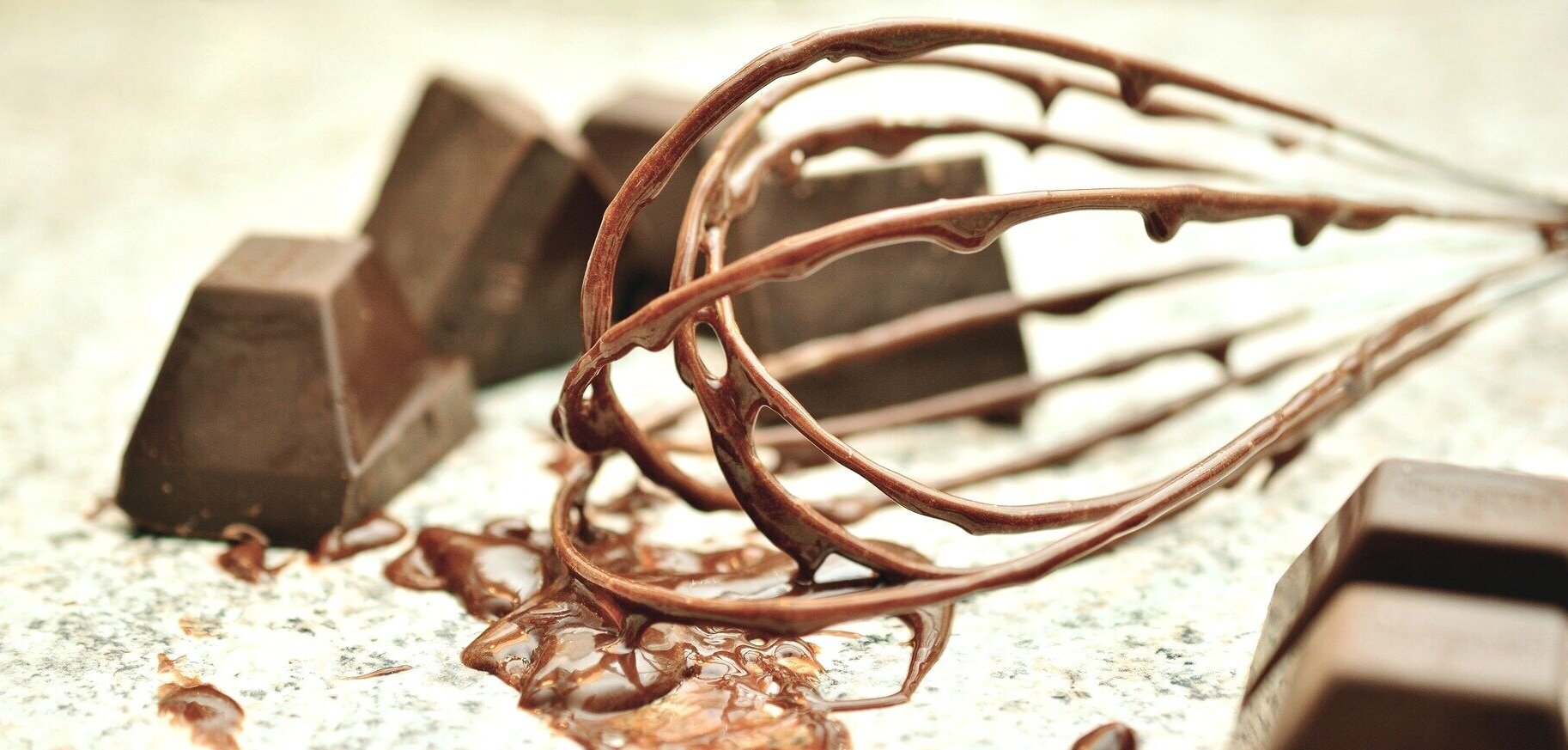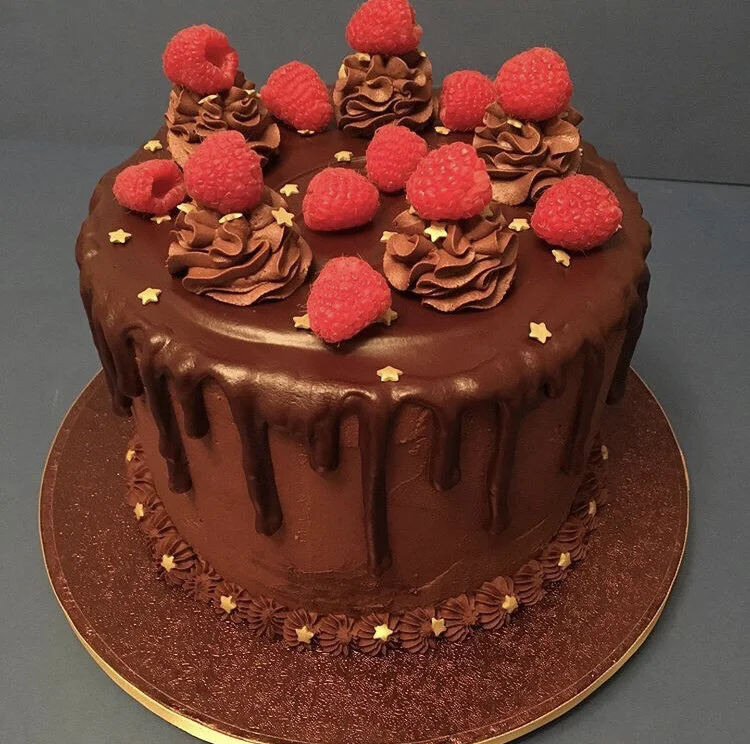How to make a chocolate ganache (using science).
Emma Brisdion
A thick, smooth, silky-looking chocolate ganache can really make a cake. Without one, a chocolate cake would be, well, still pretty good, but with a gloriously rich coat of chocolate icing, it becomes a CAKE. In capitals. An ‘I’ve got something to celebrate,’ cake; a show-stopper perfect for making event guests swoon and reach for a spoon.
Ganache frostings are famous for their perfectly smooth sheen, but are notoriously hard to get right. Never fear though; science has got you. By understanding the science behind what’s going on in the making process, we think you’ll stand a better chance of getting it right.
What you’ll need:
200g Grated 70% dark chocolate (and extra for snacking)
200ml Double cream
What you’ll do:
Step 1. Warm the double cream in a pan. Keep a close eye on it - you don’t want it to boil. Let it bubble slightly as this scorches the proteins, but stop it just before it boils. If it boils, then the heat will destabilise the fat globules and your ganache will the ganache split or separate.
Step 2. Add the grated dark chocolate. By grating it, we increase the surface area of the chocolate so that it melts into the double cream faster.
Step 3. Grab your whisk and beat the mixture to achieve the desired texture. By doing this, you’re creating an emulsion.
If you let it cool slightly and beat it with a whisk, you can create a light and fluffy texture perfect for cake fillings, but if you mix it with a spoon you can keep the mixture smooth. Pouring it onto your cooled cake at this stage means that it will set with a smooth, shiny surface, and you can also create the ‘dribbling’ effect that’s often popular, by guiding it to fall lightly down the sides of the cake.
What’s an emulsion, and why does it matter?
An emulsion is a mixture of liquids in which one liquid is where one is dispersed within the other. Fats and water don’t mix, but, if the right kind of protein is present, they can form an emulsion.
In this tasty emulsion, the tiny droplets of fat from the chocolate and the cream become suspended within the rest of the mixture (which is made up mostly of water and sugar) thanks to the casein proteins found in the double cream, which act as the emulsifier. (Yum.)
The low-down on emulsifiers
Emulsifiers have a hydrophobic (water-repelling) side and a hydrophilic (water-loving) side. When present in a mixture of water and oil, the emulsifiers surround the droplets of one of the components, keeping it separate from the other but still present within it. In ganache, the emulsifier surrounds the fat with its water-loving sides pointing out, and its water-repelling sides pointing in. Like a neat little raincoat, it allows them to coexist without actually blending.
The ratio here of chocolate to cream, and the cocoa solid content in the chocolate are really important. Generally you’ll use a 1:1 ratio of chocolate:cream. You need enough liquid (in the cream) to suspend all the fat in the chocolate. 70% chocolate works well for this but bear in mind that the higher the cocoa solids and cocoa butter in the chocolate, the more cream you’ll need, so if you use an 80% chocolate, you’ll need a ratio closer to 1:1.5 or 1:2. If there’s not enough liquid from the cream present, your ganache will be prone to splitting.
I’ve not yet tried to make one, but as I mentioned in our Great British Bake Off episode, my mum makes extraordinary cakes (totally not biased at all) and has recently turned her sugar paste flower-creating hands to learning the art of the ganache. Here’s a pic of her first go (we’d say she nailed it).
@gillybakescakes on Instagram

